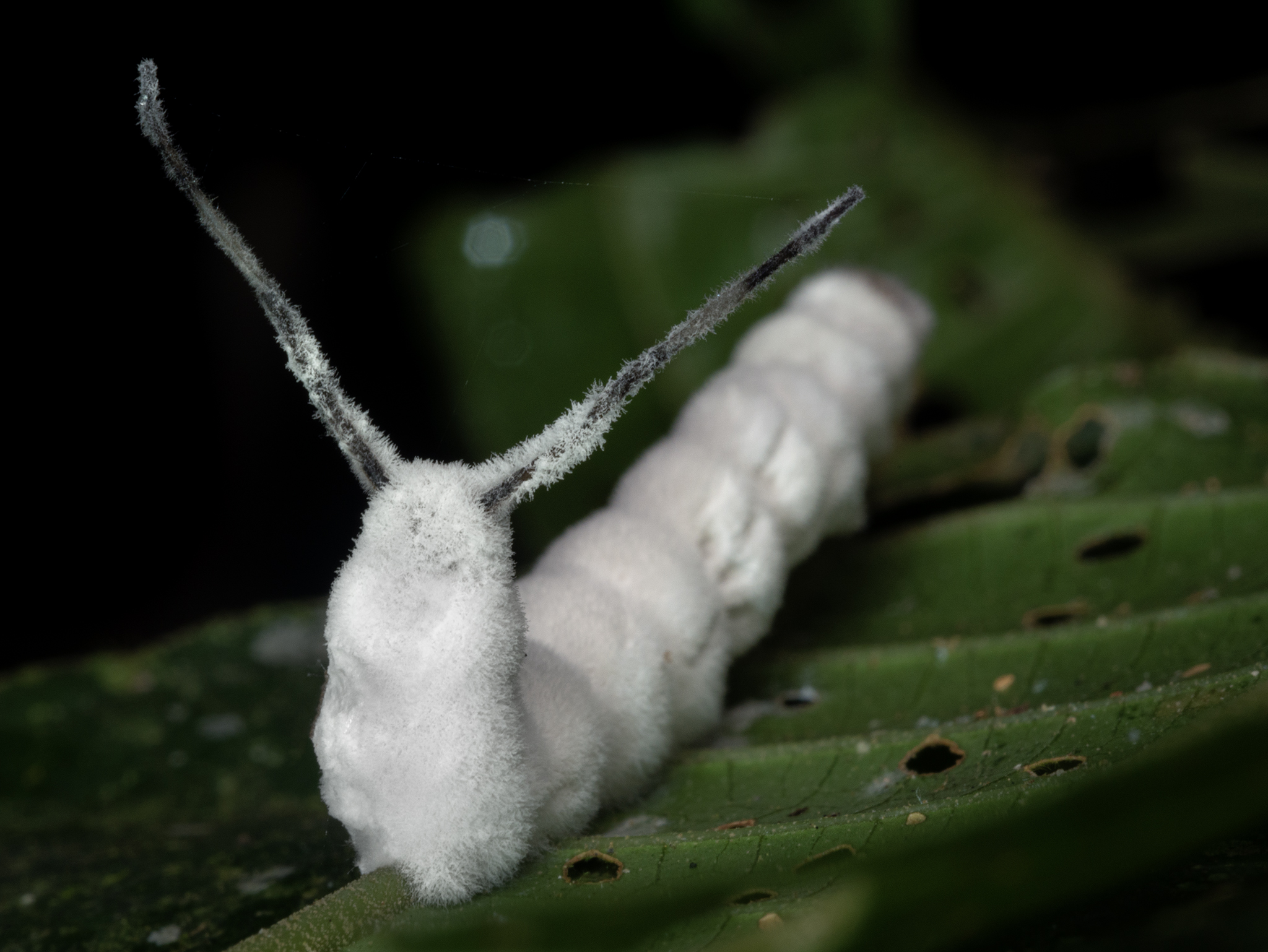Bunny ears of death…
It’s time for another crazy case of entomopathogenic fungi! These are fungi that parasitise insects – assassinating them from the inside and then taking over their bodies. The most famous are the so-called ‘zombie fungi‘, which infect the brains of their hosts and actively move them around before killing them. However, there are an unfathomable number of such fungi, and each species is a specialised hunter of a different type of insect.
When I encountered this specimen on a recent night walk at Manu Biological Station, I was excited – this was the first time I’d seen a caterpillar taken by a fungus. I sent the image to Constantin, my favourite Lepidopterologist, who informed me that this was not a caterpillar, because caterpillars don’t have antennae. Feeling like I probably should have known that, I went back to the drawing board, but I had no idea what else it could be. The enigmatic velvet worms (Onychophora) were the only thing that looked similar, and had been suggested by a few people, but the body shape was too ‘segmented’ and the antennae were too long.
Simultaneously, I’d contacted a couple of mycologists to try and identify the species of fungus, and one of them – the very clever Stephany – inadvertently helped solve the other mystery. She suggested that some caterpillars do in fact have long appendages which evolved to mimic antennae and confuse potential predators. Armed with this information, Constantin narrowed it down to the Prominent Moth family Notodontidae – known for their spectacularly ornate caterpillars. He said that the caterpillar is likely Erbessa pales, or something similar, and it means that – surprisingly – this is actually a photo of the caterpillar’s butt, not its head.
Sadly, however, Steph also informed me that the fungus was purely mycelium and lacked any fruiting bodies – the parts that mycologists primarily use to identify fungi – and so it would be difficult to pin down the species of fungus that had taken over the caterpillar. An ‘Icing Sugar Fungus’ of the genus Beauveria has been suggested, although this is a speculative guess.
To summarise, the leading theory right now is that an Erbessa pales caterpillar, with fake antennae coming out of its rear end, was tragically murdered by an unknown entomopathogenic fungus – potentially an ‘Icing Sugar Fungus’ of the genus Beauveria.
Anyone with further information regarding this crime scene is highly encouraged to come forward.
–
Prominent Moth Caterpillar (Erbessa pales) with possible Icing Sugar Fungus (Beauveria sp.), Manu Biological Station, Peru


